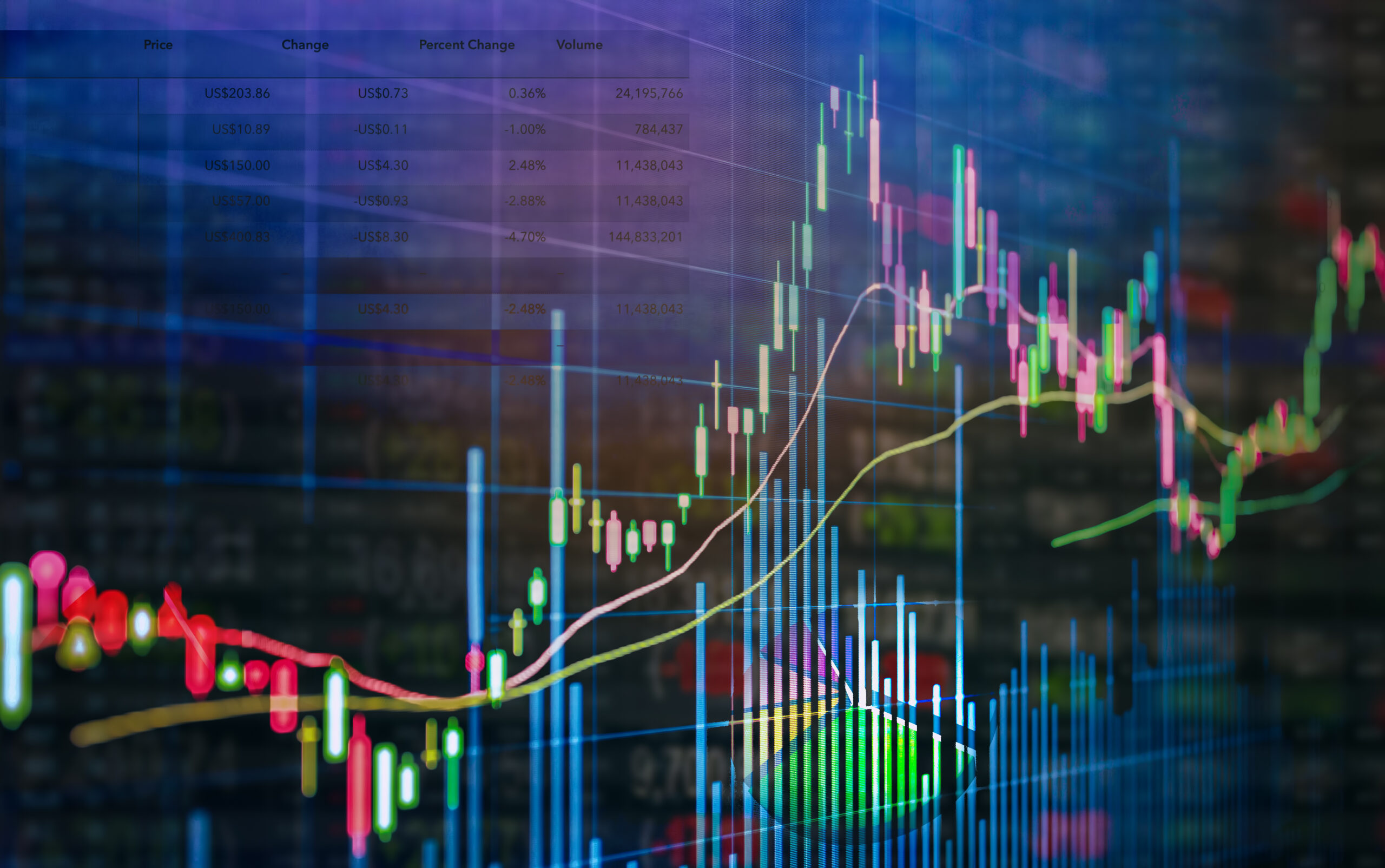The stock market, often referred to as the heartbeat of the global economy, is a dynamic and intricate system that serves as the nexus of investment, capital formation, and wealth creation. Beyond its role as a trading platform, the stock market embodies the collective aspirations, fears, and expectations of millions of investors worldwide. This article aims to embark on a comprehensive journey into the realm of the stock market, delving deep into its fundamental principles, geographical diversity, operational intricacies, and investment strategies. Throughout this exploration, we will dissect key concepts such as stock market indices, stock market tickers, psychology, and investment techniques, providing readers with a holistic view of the multifaceted world of stock market investing. So, let’s embark on this enlightening journey into the heart of the stock market and uncover the secrets to successful investing in the ever-evolving landscape of global finance.
- Basics of the Stock Market
- Participants in the Stock Market
- Stock Market Tickers and ETFs
- The Geography of Stock Markets
- Stock Market Indices
- Factors Influencing Stock Prices
- The Unseen Hand: Market Psychology in the Stock Market
- What is a Bull Market
- What is a Bear Market
- Stock Market Investment Techniques
- Risks and Challenges
Basics of the Stock Market
What is the Stock Market?
The stock market, often referred to as the equity market, represents the collective ecosystem where investors trade ownership stakes in publicly listed companies. These companies, also known as issuers, issue stocks or shares to the public as a means of raising capital. In return, investors who purchase these shares become shareholders or equity owners in the company, entitling them to a portion of its profits and assets.
The concept of the stock market dates back centuries, with early examples of stock trading emerging in trading hubs like Amsterdam, London, and Venice. Over time, stock markets have evolved into sophisticated financial ecosystems that play a pivotal role in the global economy.
The stock market operates on the fundamental principles of supply and demand. When there is high demand for a particular stock, its price tends to rise. Conversely, when supply exceeds demand, the price of a stock may decline.
How Does the Stock Market Work?
At its core, the stock market operates on the fundamental principles of supply and demand. When there is high demand for a particular stock, its price tends to rise, reflecting investors’ willingness to pay more to acquire shares. Conversely, when supply exceeds demand, the price of a stock may decline as sellers seek to offload their holdings.
When a company decides to go public, it undergoes an initial public offering (IPO), where it issues shares to investors for the first time. The proceeds from the IPO are typically used by the company for various purposes, such as funding expansion initiatives, investing in research and development, or paying off existing debt.
Once a company’s shares are publicly traded, they are bought and sold on stock exchanges, which serve as centralized marketplaces for trading securities. Investors, ranging from individual retail traders to institutional investors, can buy shares of publicly listed companies through brokerage firms or trading platforms.

Free Backtesting Spreadsheet
Participants in the Stock Market
- Investors: Individuals or institutions that buy and sell stocks in the stock market. They include retail investors, institutional investors (such as mutual funds and pension funds), hedge funds, and other market participants.
- Publicly Listed Companies: Businesses that have issued shares to the public and are traded on stock exchanges. These companies raise capital by selling shares and are subject to regulatory requirements and reporting standards.
- Stockbrokers: Intermediaries that facilitate stock trades between buyers and sellers. They execute orders on behalf of investors and provide services such as research, investment advice, and portfolio management.
- Regulators: Government agencies responsible for overseeing the stock market and ensuring fair and orderly trading. They enact rules and regulations to protect investors and maintain market integrity.
Stock Market Tickers and ETFs
Stock market tickers are unique symbols used to identify publicly traded securities.
Tickers
Stock market tickers are unique symbols used to identify publicly traded securities. Ticker symbols typically consist of one to four letters, representing a concise abbreviation of the company or fund’s name. For example, Apple Inc. trades under the ticker symbol AAPL, while the SPDR S&P 500 ETF is identified by the symbol SPY. Tickers provide a quick and efficient way to track securities in the market.
However, in Chinese stock exchanges such as the Shanghai Stock Exchange (SSE) and the Shenzhen Stock Exchange (SZSE), ticker symbols follow a number-style format rather than an alphabetical one. In this system, ticker symbols are composed of a combination of numbers, which may include letters or special characters as well. For example, the ticker symbol for PetroChina, one of the largest Chinese oil companies, is 601857 on the Shanghai Stock Exchange.
Exchange-Traded Funds (ETFs)
Exchange-Traded Funds (ETFs) have gained immense popularity among investors seeking diversified exposure to various asset classes while enjoying the flexibility and liquidity of individual stocks. These investment funds trade on stock exchanges, just like individual stocks, making them easily accessible to investors of all types. ETFs offer diversification across a basket of assets, including stocks, bonds, commodities, and even alternative investments such as real estate investment trusts (REITs) and cryptocurrencies.
One of the primary advantages of ETFs is their ability to provide investors with exposure to a wide range of assets within a single investment vehicle. By investing in an ETF, investors gain access to a diversified portfolio of securities, reducing the risk associated with investing in individual stocks or sectors. For example, the SPDR S&P 500 ETF (SPY) tracks the performance of the S&P 500 index, providing investors with exposure to the 500 largest publicly traded companies in the United States across various sectors. Another example is the Invesco QQQ Trust (QQQ), which tracks the performance of the NASDAQ-100 index, consisting of the largest non-financial companies listed on the NASDAQ stock exchange.
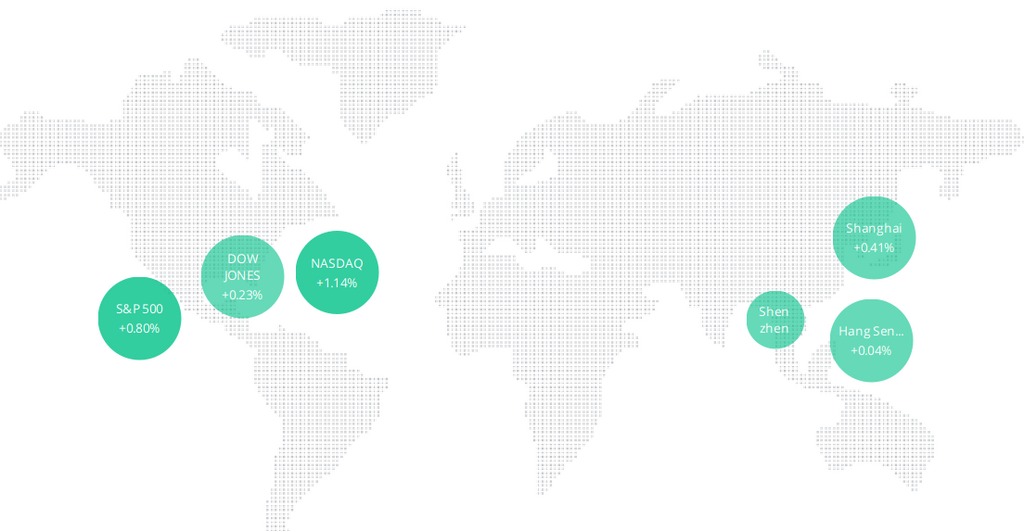
Global Market Map/Webull
The Geography of Stock Markets
US Stock Market
The United States boasts one of the largest and most influential stock markets globally, playing a central role in shaping global financial trends and investor sentiment. At the heart of the US stock market are two major exchanges: the New York Stock Exchange (NYSE) and NASDAQ.
The New York Stock Exchange, located on Wall Street in New York City, is renowned for its illustrious history and stringent listing requirements. The NYSE is the largest stock exchange in the world by market capitalization, with a history dating back to 1792. It operates as a physical trading floor where designated market makers facilitate transactions. Traders and investors flock to the NYSE to participate in the trading of stocks, bonds, exchange-traded funds (ETFs), and other securities. It is home to some of the world’s most iconic companies, including multinational corporations and blue-chip giants.
In contrast, NASDAQ, also headquartered in New York City, is known for its electronic trading platform and its focus on technology-oriented companies. NASDAQ has emerged as a hub for innovative startups, growth-oriented firms, and tech behemoths such as Apple, Amazon, and Google. Its electronic trading system facilitates high-speed transactions and provides investors with access to a diverse range of securities.
Europe Stock Market
European stock markets offer a diverse and vibrant landscape for investors, with prominent exchanges scattered across the continent. The London Stock Exchange (LSE), headquartered in the UK capital, is one of the oldest and most prestigious exchanges globally, tracing its origins back to 1698. It operates various markets, including the Main Market for large-cap stocks and the Alternative Investment Market (AIM) for smaller companies. The LSE facilitates trading in equities, bonds, derivatives, and other financial instruments, catering to a global investor base.
Euronext, a pan-European stock exchange operator, operates multiple exchanges across Europe, including Amsterdam, Brussels, Dublin, Lisbon, Oslo, and Paris. It provides investors with access to a wide range of securities and offers a liquid and transparent trading environment.
In Germany, the Frankfurt Stock Exchange (Deutsche Börse) stands as the country’s primary stock exchange and one of the largest in Europe. Located in Frankfurt, Germany’s financial capital, Deutsche Börse hosts trading in equities, bonds, ETFs, and derivatives, serving as a key hub for both domestic and international investors. It plays a central role in the European Union’s financial markets and is home to many multinational corporations.
The Tokyo Stock Exchange, located in Japan’s capital city, is the largest stock exchange in Asia by market capitalization.
Asian Stock Market
The Asian stock market encompasses a diverse array of exchanges spanning across the continent, reflecting the region’s economic dynamism and rapid growth. Among the most significant stock markets in Asia are the Tokyo Stock Exchange (TSE) in Japan and the Shanghai Stock Exchange (SSE) in China.
The Tokyo Stock Exchange, located in Japan’s capital city, is the largest stock exchange in Asia by market capitalization. It plays a pivotal role in Japan’s economy and serves as a primary platform for trading Japanese equities, bonds, and investment trusts. It lists numerous Japanese corporations and is known for its advanced technology and liquidity.
In China, the Shanghai Stock Exchange stands as one of the country’s premier stock markets, hosting trading in Chinese stocks, bonds, and funds. As China’s financial center, Shanghai plays a critical role in driving economic development and fostering capital market growth. It primarily caters to domestic investors and has experienced rapid growth in recent decades.
Hong Kong Stock Exchange (HKEX) situated in Hong Kong, HKEX serves as a vital link between mainland China and international markets. It is known for its diverse range of listings, including Chinese companies seeking global exposure.
Australian Stock Market
The Australian stock market, represented by the Australian Securities Exchange (ASX), serves as the primary platform for trading equities, derivatives, and fixed-income securities in Australia. Headquartered in Sydney, the ASX is one of the region’s leading stock exchanges and provides investors with access to a diverse range of investment opportunities.
Emerging Markets
Emerging markets such as Brazil and India have emerged as significant players in the global stock market arena, boasting their own stock exchanges catering to domestic and international investors. In Brazil, the B3 (formerly BM&F Bovespa) serves as the country’s primary stock exchange, facilitating trading in equities, futures, options, and other financial instruments.
Similarly, India’s National Stock Exchange (NSE) and Bombay Stock Exchange (BSE) play a vital role in India’s financial landscape, providing investors with access to Indian stocks, indices, and derivatives. While emerging markets offer compelling opportunities for growth and diversification, they also entail higher risks due to geopolitical uncertainties, economic volatility, and regulatory challenges.
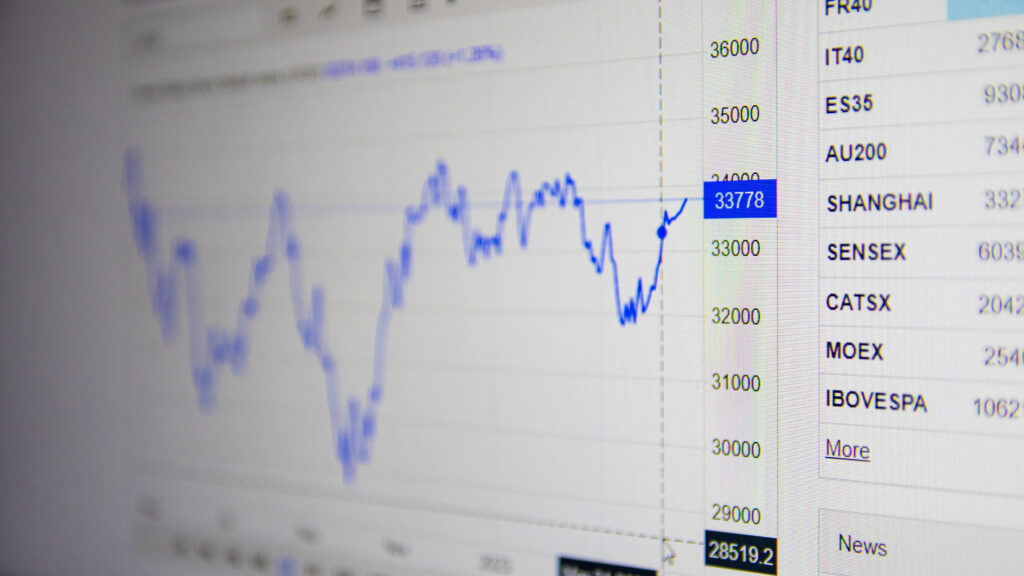
Stock Market Index chart by Guillermo Recaredo/Vecteezy
Stock Market Indices
Stock market indices serve as barometers of overall market performance and provide investors with valuable insights into specific segments of the market. Indices are composed of a basket of stocks representing a particular market, sector, or asset class, and they are used as benchmarks for evaluating investment returns, tracking market trends, and measuring portfolio performance. Here’s an in-depth look at some of the most widely recognized stock market indices around the world:
The S&P 500 is perhaps the most renowned and widely followed stock market index globally.
United States Indices
S&P 500 (Standard & Poor’s 500): The S&P 500 is perhaps the most renowned and widely followed stock market index globally. It consists of 500 of the largest publicly traded companies in the United States, representing a diverse array of industries and sectors. The S&P 500 is weighted by market capitalization, meaning that companies with higher market values exert a greater influence on the index’s movements. As a broad-based index, the S&P 500 is often used as a proxy for the overall performance of the US stock market.
Dow Jones Industrial Average (DJIA): The DJIA is one of the oldest and most iconic stock market indices, comprising 30 large-cap blue-chip companies listed on US stock exchanges. Unlike the S&P 500, which is weighted by market capitalization, the DJIA is price-weighted, meaning that higher-priced stocks have a greater impact on the index’s value. The DJIA is often regarded as a barometer of the US economy’s health and is closely monitored by investors, policymakers, and economists.
NASDAQ Composite: The NASDAQ Composite index tracks the performance of all stocks listed on the NASDAQ stock exchange, which is known for its focus on technology, biotechnology, and other growth-oriented sectors. The NASDAQ Composite includes a diverse range of companies, from established tech giants to emerging startups, making it a valuable gauge of trends in the technology and innovation sectors.
United Kingdom Index
FTSE 100 (Financial Times Stock Exchange 100 Index): The FTSE 100 is the leading stock market index in the United Kingdom, comprising the 100 largest companies listed on the London Stock Exchange (LSE) by market capitalization. It represents a diverse range of sectors, including finance, energy, consumer goods, and healthcare. The FTSE 100 is widely regarded as a barometer of the UK stock market’s performance and is closely watched by investors, analysts, and policymakers.
Japan Index
Nikkei 225: The Nikkei 225 is Japan’s premier stock market index, consisting of 225 large-cap companies listed on the Tokyo Stock Exchange (TSE). It is price-weighted, with higher-priced stocks exerting a greater influence on the index’s movements. The Nikkei 225 is a key indicator of Japan’s economic and financial health, reflecting trends in sectors such as technology, automotive, and manufacturing.
The MSCI World Index provides investors with exposure to a broad-based global equity portfolio and serves as a benchmark for global equity performance.
Global Indices
MSCI World Index: The MSCI World Index is a widely tracked global equity index that represents large and mid-cap stocks across developed markets worldwide. It encompasses companies from regions such as North America, Europe, Asia-Pacific, and other developed economies. The MSCI World Index provides investors with exposure to a broad-based global equity portfolio and serves as a benchmark for global equity performance.
MSCI Emerging Markets Index: The MSCI Emerging Markets Index tracks the performance of equities across emerging market countries, representing companies from regions such as Asia, Latin America, Africa, and Eastern Europe. It includes stocks from countries with developing economies and financial markets, offering investors exposure to high-growth opportunities and diversification benefits.
Factors Influencing Stock Prices
Stock prices are influenced by a myriad of factors, including:
- Company Performance: Earnings reports, revenue growth, and profitability are key drivers of stock prices. Strong financial performance often leads to higher stock prices, while poor performance can result in declines.
- Economic Indicators: Macroeconomic factors such as GDP growth, inflation rates, and interest rates can impact stock prices. A healthy economy generally correlates with rising stock prices, while economic downturns may lead to market declines.
- Market Sentiment: Investor sentiment, perceptions, and emotions play a significant role in stock price movements. Positive news and optimism can drive buying activity, while negative news or fear can trigger selling.
- Industry Trends: Trends and developments within specific industries can influence the performance of related stocks. For example, technological advancements can boost tech stocks, while regulatory changes may impact sectors like healthcare or energy.
- Global Events: Geopolitical tensions, natural disasters, and global crises can have widespread effects on financial markets. Investors often react to these events by adjusting their portfolios and risk exposure.
- Market Liquidity: The ease with which investors can buy or sell shares of a company, known as market liquidity, can impact stock prices. Highly liquid stocks tend to have narrower bid-ask spreads and lower transaction costs.
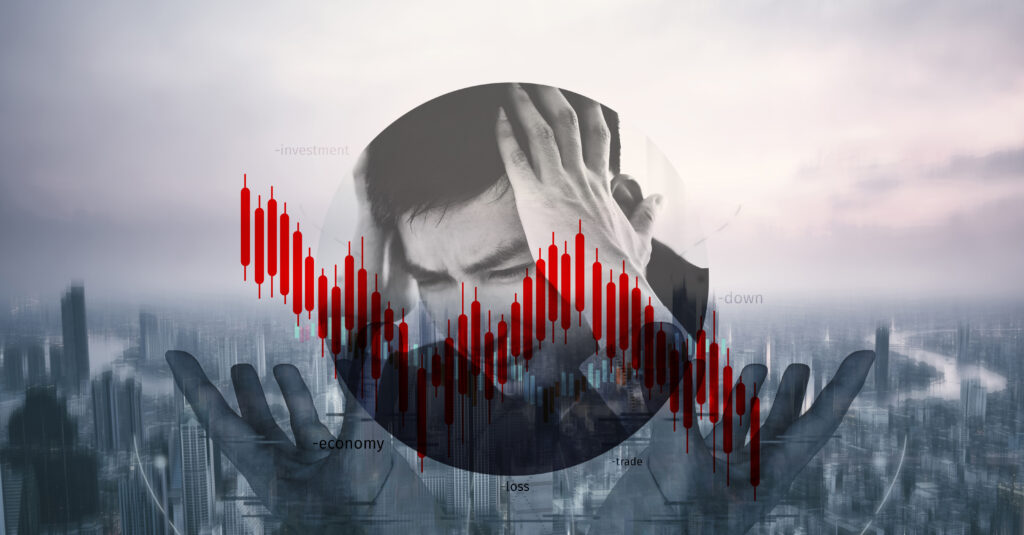
Wiphop Sathawirawong/Vecteezy
The Unseen Hand: Market Psychology in the Stock Market
While economic fundamentals play a crucial role in the stock market, beneath the surface lies another powerful force: market psychology. This complex web of emotions, biases, and collective behavior of investors can significantly influence stock prices, creating a dynamic interplay between rational and irrational forces.
Investor sentiment, the prevailing mood of the market, swings between optimism (bullishness) and pessimism (bearishness). Fear, a potent market mover, can trigger panic selling, driving prices down even for fundamentally strong companies. Conversely, greed can fuel irrational exuberance, pushing valuations beyond justifiable levels. This cyclical dance of emotions creates periods of both booms and busts.
Herd mentality, the tendency to follow the crowd, further amplifies these emotional swings. Investors, often seeking validation, mimic the actions of others, regardless of individual analysis. This can exacerbate market movements, leading to bubbles or crashes that may not be fully justified by economic realities.
Understanding these psychological factors is crucial for navigating the stock market. By recognizing the potential impact of emotions and biases on our own decision-making, we can become more rational investors. This involves focusing on long-term fundamentals, conducting thorough research, and developing a disciplined investment strategy that is not swayed by market sentiment.
While it may be impossible to predict the exact impact of market psychology, acknowledging its presence allows us to be more informed participants in the ever-evolving drama of the stock market. By remaining aware of the emotional currents, we can better navigate the market’s ebbs and flows, making informed decisions based on a blend of rational analysis and mindful awareness of the psychological forces at play.
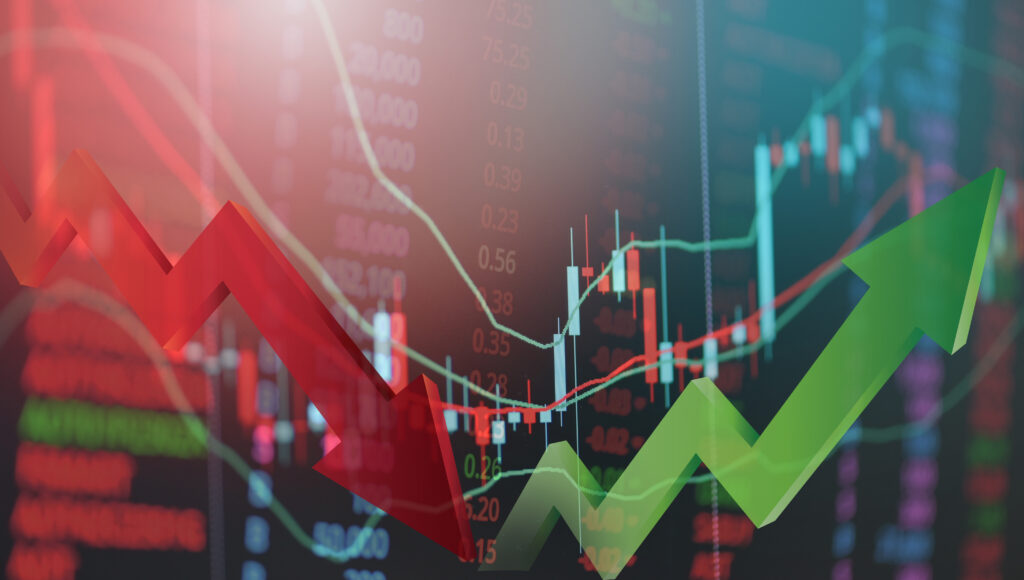
Image by Bigc Studio/Vecteezy
What is a Bull Market
A bull market is a period when stock prices are on the rise and investor confidence is high. It’s basically the opposite of a bear market, where things are trending downward. There’s no official definition of how long a bull market needs to last, but a common benchmark is a 20% increase in stock prices over at least a two-month period.
Here are some key characteristics of a bull market:
- Rising stock prices: This is the most obvious sign of a bull market. Investors are feeling optimistic about the future, so they’re buying stocks, which drives prices up.
- Strong economy: Bull markets often coincide with a healthy economy. There’s low unemployment, consumer confidence is high, and corporate profits are rising. All this translates to more money flowing into the stock market.
- Investor optimism: During a bull market, investors are generally upbeat about the stock market’s prospects. They’re more likely to buy stocks and hold onto them for the long term.
What is a Bear Market
A bear market is the flip side of a bull market, characterized by a significant decline in stock prices. It’s generally defined as a drop of at least 20% from a recent market high, sustained over a period of time. Here’s a breakdown of what a bear market entails:
- Falling stock prices: This is the defining feature of a bear market. Investor pessimism and a lack of confidence lead to selling stocks, driving prices down.
- Economic slowdown: Bear markets often coincide with periods of economic weakness, such as recessions. This can be caused by factors like rising interest rates, inflation, or geopolitical instability.
- Investor fear: During a bear market, investors become risk-averse and flee towards safer investments like bonds or cash. This further fuels the decline in stock prices.
The duration of a bear market can vary greatly, ranging from a few weeks to several years. The Great Depression is a prime example of a prolonged bear market.
Technical analysis is a method of analyzing stock price movements and market trends based on historical price and volume data
Stock Market Investment Techniques
Investing in the stock market requires a strategic approach and a deep understanding of various investment techniques. Whether you’re a seasoned investor or a newcomer to the world of stock trading, employing the right investment strategies can help you achieve your financial goals and navigate the complexities of the market. Here, we explore some of the most common and effective stock market investment techniques:
Fundamental Analysis
Fundamental analysis is a method of evaluating a company’s financial health and intrinsic value by analyzing its fundamental factors. Investors scrutinize key metrics such as revenue growth, earnings per share (EPS), price-to-earnings (P/E) ratio, return on equity (ROE), and debt-to-equity ratio to assess the company’s financial strength and growth prospects. By conducting a thorough analysis of a company’s fundamentals, investors can make informed decisions about whether to buy, hold, or sell its stock. Fundamental analysis provides valuable insights into the underlying value of a company, allowing investors to identify undervalued stocks and capitalize on long-term investment opportunities.
Technical Analysis
Technical analysis is a method of analyzing stock price movements and market trends based on historical price and volume data. Traders use various technical indicators, chart patterns, and statistical tools to identify potential buy or sell signals and forecast future price movements. Common technical indicators include moving averages, relative strength index (RSI), MACD (Moving Average Convergence Divergence), and Bollinger Bands. Technical analysis focuses on identifying patterns and trends in stock prices, such as support and resistance levels, trend lines, and chart formations. By leveraging technical analysis, traders can make timely decisions and capitalize on short-term trading opportunities in the market.
Buy and Hold
Buy and hold is a long-term investment strategy based on the principle of investing in quality stocks and holding them for an extended period, typically years or even decades. This strategy is rooted in the belief that the stock market will trend upward over time, despite short-term fluctuations and market volatility. Investors who adopt the buy-and-hold approach focus on selecting fundamentally sound companies with strong growth prospects, competitive advantages, and sustainable business models. By maintaining a long-term perspective and resisting the urge to react to short-term market fluctuations, investors can benefit from capital appreciation and dividend income over time. Buy-and-hold investors prioritize patience, discipline, and conviction in their investment decisions, aiming to build wealth steadily and consistently over the long term.
Diversification
Diversification is a risk management technique that involves spreading investments across different asset classes, sectors, and geographic regions to reduce risk and minimize the impact of market volatility. By diversifying their portfolios, investors can avoid putting all their eggs in one basket and mitigate the risk of significant losses from individual stock or sector downturns. Diversification allows investors to capture returns from various market segments while reducing overall portfolio risk. Investors can achieve diversification by investing in a mix of stocks, bonds, mutual funds, exchange-traded funds (ETFs), and other asset classes. Additionally, diversifying across sectors and geographic regions helps investors hedge against regional economic downturns and sector-specific risks.
Dollar-Cost Averaging
Dollar-cost averaging is an investment technique where investors regularly invest a fixed amount of money into the market, regardless of its fluctuations. Instead of trying to time the market or predict short-term price movements, investors maintain a consistent investment strategy over time. By investing a fixed amount at regular intervals, investors can take advantage of market downturns and purchase more shares when prices are low, and fewer shares when prices are high. Dollar-cost averaging helps mitigate the impact of market volatility and reduces the risk of making poor timing decisions. Over time, this strategy can result in lower average purchase prices and potentially higher returns on investment.
Risks and Challenges
- Market Risk: Also known as systematic risk, market risk refers to the risk of loss due to factors affecting the overall stock market, such as economic downturns, geopolitical events, or systemic financial crises. Market risk cannot be diversified away and affects all stocks to some degree.
- Company-Specific Risk: Also known as unsystematic risk, company-specific risk relates to factors specific to individual companies, such as poor management, product recalls, or legal issues. Diversification across different stocks and industries can help mitigate company-specific risk.
- Volatility: Stock prices can be volatile, experiencing frequent and sometimes drastic fluctuations in response to market events or news. Volatility can create uncertainty and anxiety for investors, but it also presents opportunities for profit for those who can navigate it effectively.
- Liquidity Risk: Liquidity risk refers to the risk of not being able to buy or sell a stock at the desired price due to insufficient trading volume or market depth. Stocks with low liquidity may experience wider bid-ask spreads and greater price fluctuations.
- Behavioral Biases: Human emotions and cognitive biases can influence investment decisions and lead to irrational behavior. Common biases include overconfidence, loss aversion, herd mentality, and anchoring. Awareness of these biases is essential for making rational and disciplined investment choices.
Final Thoughts
The stock market is a multifaceted ecosystem that offers opportunities for wealth creation and portfolio diversification. By understanding its basics, operational mechanisms, physiology and investment strategies, investors can make informed decisions to achieve their financial goals. Whether trading individual stocks, ETFs, or employing various investment techniques, staying informed and disciplined is key to success in the dynamic world of the stock market.
Share on Social Media:
